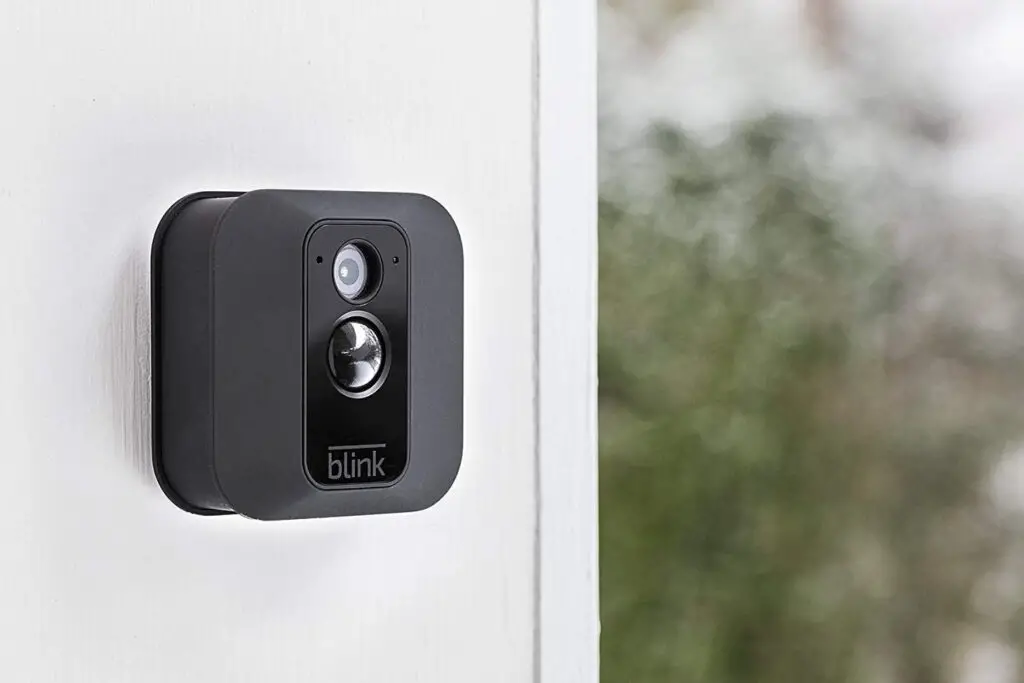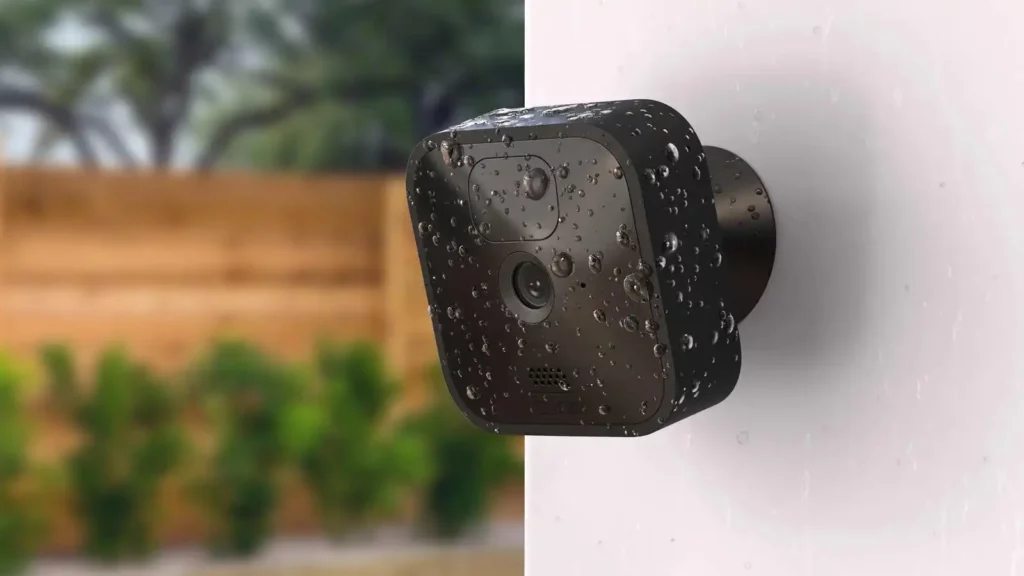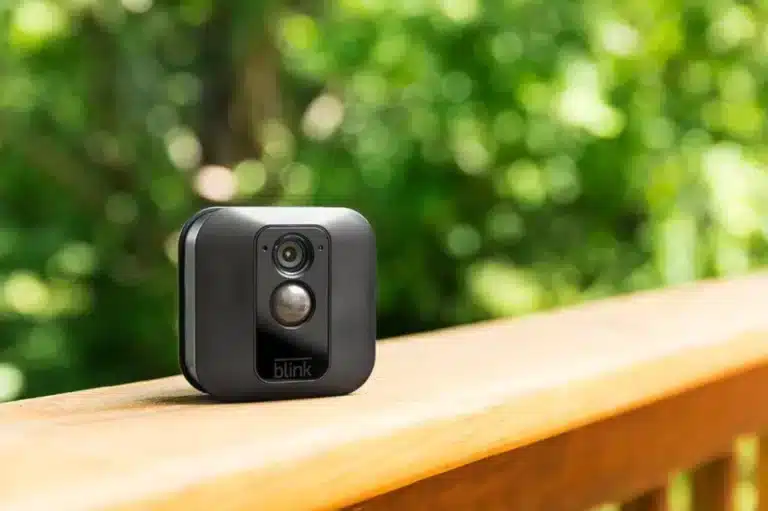Introduction
How Long Do Blink Outdoor Camera Batteries Last: Blink Outdoor cameras are designed to provide a battery life of up to two years under normal usage conditions. This estimation assumes that the camera is triggered by motion detection a few times a day and the Live View feature is used sparingly. That individual usage patterns and environmental factors can impact the actual battery life experienced.
Several factors influence how long the batteries of Blink Outdoor cameras last. These include the frequency of camera activations, the duration of each recording, the strength of the Wi-Fi connection, the ambient temperature, and the camera’s positioning. Higher activity levels, longer recording durations, weaker Wi-Fi signals, extreme temperatures, and constant exposure to direct sunlight can all contribute to reduced battery life.
Blink Outdoor cameras are powered by two AA lithium batteries, which are included with the camera kit. These batteries are readily available in stores and online. When it’s time to replace the batteries, to use high-quality lithium batteries to ensure optimal performance and longer battery life.

How long does Blink battery really last?
Up to two years
Under normal settings, the battery should last two years.Battery life will vary based on device settings, use, and environmental factors.
Several factors influence the actual battery life experienced by Blink camera users. One crucial factor is the frequency of camera activations. Regular Live View and motion detection usage drains camera batteries. Alternatively, if your camera is in a low-activity area or you have reduced motion detection sensitivity, the battery life will be greater.
The duration of each recording also impacts battery consumption. If your camera is set to record longer clips, it will use more power. By customizing the recording length to the minimum required, you can help extend battery life.
The strength of the Wi-Fi connection is another factor. A weak Wi-Fi signal can cause the camera to consume more power as it struggles to maintain a stable connection. It’s advisable to position your camera within a reasonable range of the Wi-Fi router to ensure a strong signal and conserve battery power.
Environmental conditions also play a role in battery performance. Extreme temperatures, both hot and cold, can affect battery life. If you want your Blink camera’s battery to last as long as possible, keep it out of the sun and out of the way of harsh weather.
How can I make my blink camera battery last longer?
Shorten the length of your motion clips. Reduce your use of Live View. Lower your camera’s sensitivity setting.
Adjust Motion Detection Sensitivity: By fine-tuning the motion detection sensitivity settings, you can reduce unnecessary activations and conserve battery power. Set the sensitivity level to a point where it will only trigger for significant motion events, minimizing false alerts and unnecessary recordings.
Customize Recording Length: Blink cameras allow you to adjust the duration of each recording. Set the recording length to the minimum necessary to capture the desired footage. Shorter recording durations consume less battery power and maximize storage capacity.
Optimize Wi-Fi Signal Strength: A weak Wi-Fi signal can cause the camera to consume more power as it struggles to maintain a stable connection. Position your Blink camera within a reasonable range of the Wi-Fi router to ensure a strong and consistent signal. This will help reduce power consumption and extend battery life.
Limit Live View Usage: Although Live View is a useful feature, excessive use can drain the camera’s battery quickly. Avoid constantly accessing the Live View feed unless necessary. Instead, rely on motion-triggered recordings to conserve battery power.
Can I use rechargeable batteries in Blink outdoor camera?
You cannot use rechargeable batteries in your Blink camera, as per Blink. Blink only recommends using two 1.5 volt Lithium non-rechargeable batteries of size AA to provide a total of 3 volts of steady power. However, there are a few lithium rechargeable batteries that can be safely used in your Blink camera.
Battery Capacity: Look for rechargeable batteries with a high mAh (milliampere-hour) rating. Higher mAh ratings indicate a larger capacity, which means the batteries can provide power for longer periods before requiring recharging.
Low Self-Discharge: Opt for low self-discharge NiMH batteries. These batteries retain their charge even when not in use, making them suitable for devices like security cameras that may have infrequent use. Low self-discharge batteries are also known as “pre-charged” or “hybrid” batteries.
Charger Compatibility: Ensure that you have a compatible charger for your rechargeable batteries. A charger by the battery manufacturer or manufactured specifically for your batteries is preferable.
Cost Savings: Rechargeable batteries can save you money in the long run compared to disposable batteries. Instead of constantly purchasing new batteries, you can reuse the rechargeable ones by simply recharging them when needed.
Environmental Impact: Rechargeable batteries are more eco-friendly than disposable batteries. By reducing the number of disposable batteries you use and dispose of, you contribute to minimizing environmental waste.
Can Blink cameras record longer?
You are allotted 7,200 seconds of recording per Sync Module. You can upgrade to saving an unlimited number of clips by purchasing a Blink Subscription Plan at any time.
Blink cameras operate on battery power, and longer recordings consume more battery life. By setting a maximum recording length, Blink aims to maximize the camera’s battery efficiency and ensure a longer overall battery life. This allows the camera to remain operational for an extended period between battery changes or recharges.
The Sync Module may either save locally collected video from Blink cameras or upload it to the cloud (depending on the subscription plan). Longer recordings might quickly exceed the storage limit. With Blink’s limited recording time constraints, users can easily manage their storage without having to delete old content or pay for extra space.
Blink cameras can only capture for brief periods of time because to limited battery life and storage space. The longest video a Blink camera can capture is 60 seconds. During this time period, sufficient data may be recorded with little impact on battery life.
While the default recording time for Blink cameras is 60 seconds, users may adjust this setting as needed. The video clips created using Blink may be anything between five seconds and sixty seconds in duration.

How many batteries does Blink outdoor camera use?
Install or replace batteries
Place the two AA lithium batteries in their slots, aligning the camera’s + and – to the batteries’.
Blink specifically recommends using lithium batteries, as they offer superior performance and longevity compared to alkaline batteries. Lithium batteries are known for their longer lifespan, better power retention, and ability to perform well in extreme temperatures. They are also less prone to leakage, which can be a concern with some alkaline batteries.
First-time Blink Outdoor camera buyers get two AA lithium batteries. The camera comes with these batteries, so you can set it up and use it straight away. However, use habits and environmental conditions may shorten the camera’s battery life, thus the provided batteries may not last as long.
When it’s time to replace the batteries, Blink recommends using high-quality lithium batteries. These can be readily purchased from various retailers and online stores. To choose reliable and reputable brands to ensure optimal performance and battery life.
In regular use, Blink Outdoor cameras’ batteries last two years due to their power efficiency. However, camera activity, use habits, and ambient circumstances might affect battery life.
Can I use regular AA batteries in Blink outdoor camera?
Yes, you can use regular AA batteries in Blink cameras. However, it is to use lithium AA batteries for better performance and longer battery life. Regular alkaline AA batteries may not last as long and may not perform as well in extreme temperatures.
Alkaline batteries generally have a shorter lifespan compared to lithium batteries. They may provide a shorter duration of power before requiring replacement or recharging. The exact battery life will depend on various factors such as camera activity, usage patterns, and environmental conditions.
The performance of regular alkaline batteries may vary compared to lithium batteries, especially in extreme temperatures. Alkaline batteries tend to perform better in moderate temperature ranges, while their performance can decline in very high or low temperatures.
Lithium batteries have 1.5 to 1.7 volts, whereas alkaline batteries have 1.5. The voltage disparity may not damage the Blink Outdoor camera, although lithium batteries are higher.
Regular AA alkaline batteries are inexpensive and can be found at most places. If you need a cheap and readily available way to charge your Blink Outdoor camera, these are a good alternative to lithium batteries.
What kind of batteries come with Blink?
Blink cameras use non-rechargeable 1.5V AA lithium metal batteries. These AA lithium metal batteries are suitable for the Blink XT2 cameras as well as the original Blink XT or XT1. Available in a pack of 10, these lithium AA batteries will hold their power for up to 20 years.
Longer Lifespan: AA lithium batteries tend to have a longer lifespan compared to alkaline batteries. This means that they can power your Blink cameras for an extended period before needing replacement or recharging. The exact battery life will depend on factors such as camera activity, usage patterns, and environmental conditions.
Better Performance in Extreme Temperatures: Lithium batteries perform well in both high and low temperature environments. They can handle a wider temperature range compared to alkaline batteries, making them more suitable for outdoor use where temperatures can fluctuate.
Improved Power Retention: Lithium batteries have a lower self-discharge rate, meaning they can retain their charge for longer periods when not in use. This is particularly beneficial for devices like Blink cameras that may have infrequent usage.
Reduced Risk of Leakage: Lithium batteries have a lower risk of leakage compared to some alkaline batteries. This is an consideration for electronic devices like Blink cameras, as leakage can damage the device and compromise its functionality.
Does Blink battery really last 2 years?
According to Blink, their cameras can last up to two years on a single set of AA lithium batteries. However, this estimate is based on the cameras being used for an average of 40,000 seconds per month, which equates to about 1,333 seconds per day.
Usage Patterns: The battery life of your device is heavily dependent on how often and for how long you use the camera. The battery life of your Blink camera may decrease more quickly if you set up motion detection or use the Live View function often. However, battery life will be prolonged if the camera is placed in a low-traffic location or if the motion detection settings are altered to be less sensitive.
Environmental Factors: Environmental conditions can impact battery performance. Extreme temperatures, both hot and cold, can affect battery life. High temperatures can cause the batteries to drain faster, while extremely cold temperatures can temporarily reduce battery capacity. It’s to install your Blink camera in an area protected from direct sunlight and extreme weather conditions to optimize battery performance.
Camera Positioning: The placement of your Blink camera can also affect battery life. If the camera is positioned in an area with constant motion or activity, it will be triggered more frequently and consume more battery power. Consider the camera’s field of view and adjust its positioning to focus on specific areas of interest rather than capturing continuous activity.
Battery Quality: The quality of the batteries used can also impact their lifespan. Blink recommends using high-quality lithium batteries for optimal performance. Using low-quality or expired batteries may result in shorter battery life.

Conclusion
Monitoring the battery status through the Blink app and receiving notifications when the battery level drops can help you stay proactive in managing the power supply of your cameras. Additionally, using high-quality lithium batteries for replacements will ensure optimal performance.
The Blink Outdoor series of cameras is designed to work quickly and effectively. They’re programmed to rest until action awakens them, at which point they’ll ramp up their energy use. To save power, the camera should be activated only when it’s really being used.
Whether it’s for home security or monitoring outdoor areas, the Blink Outdoor cameras offer a wireless solution with batteries that can provide long-lasting power, ensuring that you can keep a watchful eye on your surroundings without frequent interruptions or the need for constant recharging.
The level of camera activity and usage will directly affect battery life. If your camera is located in a high-traffic area or constantly recording due to frequent motion triggers, the batteries may drain more quickly. On the other hand, cameras placed in quieter or less frequently monitored areas may experience longer battery life.

